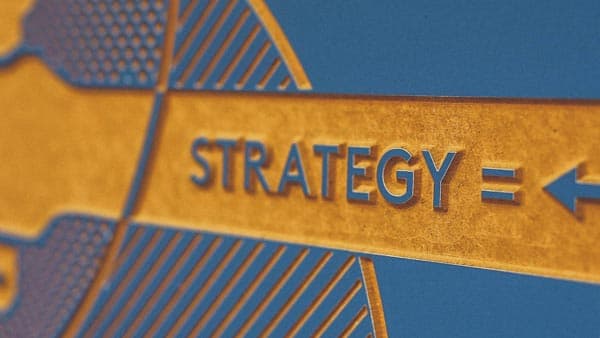

Jan 09, 2020
Timing is a tricky thing when it comes to predicting the future. Gurus—and quantum physicists—will tell you that time isn’t real, at least not in the worlds beyond our immediate physical reality. Since seeing the future is about seeing what’s already in that timeless state, it makes it tricky to predict the future AND its timing, since time is an illusion.
Because of this, I’ve decided not to call this post “Predictions for 2020” since, while my past predictions have been fairly accurate, the timing hasn’t been spot-on.
Short Term (1-4 years)
The rise of the Customer Data Platform.
The perfect storms to favor CDPs is here. It comes from a mixture of three powerful forces.
Force 1: Brands want to track every trace of user experience to then use this information to provide better marketing and customer service for customers. This is the reason Sales Force is continuing to grow like crazy, it’s the reason brands love Sitecore and Adobe. As far as the latter two, it was never about content management, it was about orchestrating the entire experience in a coherent way. All the other CMS platforms out there just don’t get it and only provide a partial solution to the problem. Most brands and smaller companies can’t afford those platforms however, and/or feel they are too complex for their needs. CDPs can provide a large part of the Customer Experience Management without the CMS.
Force 2: The rise of the headless architecture. This is a bit of a nerdy thing, but it seems to be the direction everybody is going. That makes the dependency on a content management system smaller. Some platforms such as Sitecore seem to be ahead of the game by providing great headless integration (see Sitecore JSS) but for the most part, most platforms are years behind in this and will lose business to a combination of best-of-breed headless CMSs and CDPs.
Force 3: The new regulatory scrutiny over privacy. Recent legal changes, beginning with GDPR, continuing with California’s CCPA and likely extending to slightly different laws in all 50 states and many countries will make many customers simply feel compelled to outsource the liability to a third party. The best way to not have liability is to not store anything yourself and not manage any customer data. CDPs will therefore shine and do well if they provide that boundary where customers are able to USE the data within the regulatory limits of the new laws without direct access to it.
Microservices, Test Automation and CICD to power high-end marketing efforts.
Larger brands will continue to expand their need for continuous change in terms of marketing, which translates to a need for continuous delivery cycles. Brands will need to deploy often, with ever-increasingly tight deadlines. Traditionally, this means there is no time to build things “right” from the beginning; a superhuman effort is required for every release. There IS a better way however. More traditional software development shops have already had this working for years. As you build solutions with a test-driven approach—using continuous integration and delivery—you will have a larger up-front cost, but you can easily deploy every couple weeks (or even more often) in a large scale website or other marketing system. As customers require agencies to implement more microservice/headless combo solutions, there’s a lot of risk without good test automation and CICD. It becomes an architectural requirement to do this right from the very first build. If you are an agency, you will either have to do this for any large piece of tech, or you will fail. If you are doing CICD great, but this prediction is not just as much about CICD as much as it is about Test Automation. Microservices? If you are serious about this, you will quickly realize that microservices with insufficient test automation is pretty close to impossible and this is where the industry is going.
AI Marketing
Stage 1. Finally, the promise of AI will begin to take hold. No, this will not replace marketers, but it will take a ton of the grunt work away. Want to figure out what customer segments are on your website today? Let the software suggest how to break customers down. Want to know what makes a campaign successful? Let the software provide patterns that are most effective . Want to figure out what version of the CTA to show THIS customer? The software will predict that for you. Want to know what products THIS customer is interested in before they even tell you? . The key is to think of AI as a way to provide insights much more easily using data provided by YOUR customers. Automatically classifying your customers and optimizing your marketing effectiveness will become much easier. Marketers and agencies will focus more on setting the tech up well in the first place, and then pump in content in that serves individual needs.
Stage 2 will consist of insights and AI being provided in an aggregate manner by platforms. In other words, brands’ AI engines will provide the same value as in Stage 1 but the neural networks powering these decisions and insights will be driven by data across a number of web properties, not just those you own yourself. This will also become more common as machine learning training algorithms evolve to ensure data privacy is respected. (See differential privacy and private machine learning) We will also see that the enterprise will provide inputs to AI not just from the website but from a number of sources, internal systems and external data feeds.
Long Term (3-15 Years)
The Post-Mobile Era
Steve Jobs spoke of the “Post-PC Era”. The “Post-Mobile Era” will come as AR headsets become commonplace and are able to eventually replace our mobile devices. Initially, these are viewed by many as VR gaming devices. As Hololens-style devices become more accessible, the world of AR will be used by many. At first games, sure. But as Microsoft has demonstrated, there are many business workflows that are better addressed with AR, especially for field workers. The key things that are BETTER about AR devices are:
- They don’t require you to hold them. You don’t have to pull it out of your pocket. You already have it ready once you are wearing it.
- The screen space is dramatically bigger. You will wonder how you ever looked at your mobile phone and got anything done, because the screen is so tiny. Same for your PC, for that matter.
- The screen shows you the data in a volumetric context which mixes with the outside world. In some contexts this is important. You want to know how big the table is? Well it’s better to look at that virtual measuring tape overlaid on the table is it not? Want to know what an item is? Want to label things around you or color code them?
The Transportation Revolution that will never be.
Silicon Valley has been in love with Uber and Lyft for a while. The vision is that transportation as we know it will change dramatically. As cars become self-driving, you will be less inclined to “own” a car and will instead switch to a subscription-style service where cars show up as you need them. This is what’s behind their monumental valuations. It’s not that they will have Uber everywhere as much as that Uber will then become driver-less, and you will no longer own a car. There are many assumptions that go into this, but the key flaw in my view is that it will take much longer than expected for self-driving cars to obtain regulatory approval. The Tesla accident a few years ago comes to mind. You know the first one where the driver was decapitated when the Tesla drove under an 18-wheeler? I think studies will demonstrate that self-driving cars are safer than people which may lead to initial approval of self-driving cars, but sooner or later there will be a scary, bad accident, much like the Tesla one. Perhaps even one with a lot more fatalities. That’s the kind of thing that will make driverless cars feel more like random terrorist attacks than like car accidents. It won’t be the number of deaths, as much as the fact that it will be hard to explain and even harder to guarantee future safety when one of these “freak” accidents takes place. And this is where suddenly self-driving cars will take a back seat much like nuclear energy does today. Yes nuclear energy is safer, greener, etc. but good luck getting anyone to say that they are ok with a new plant in their city. It just won’t happen. The technology will remain in some form or the other in the car though, but more as assistive technology than anything else.








